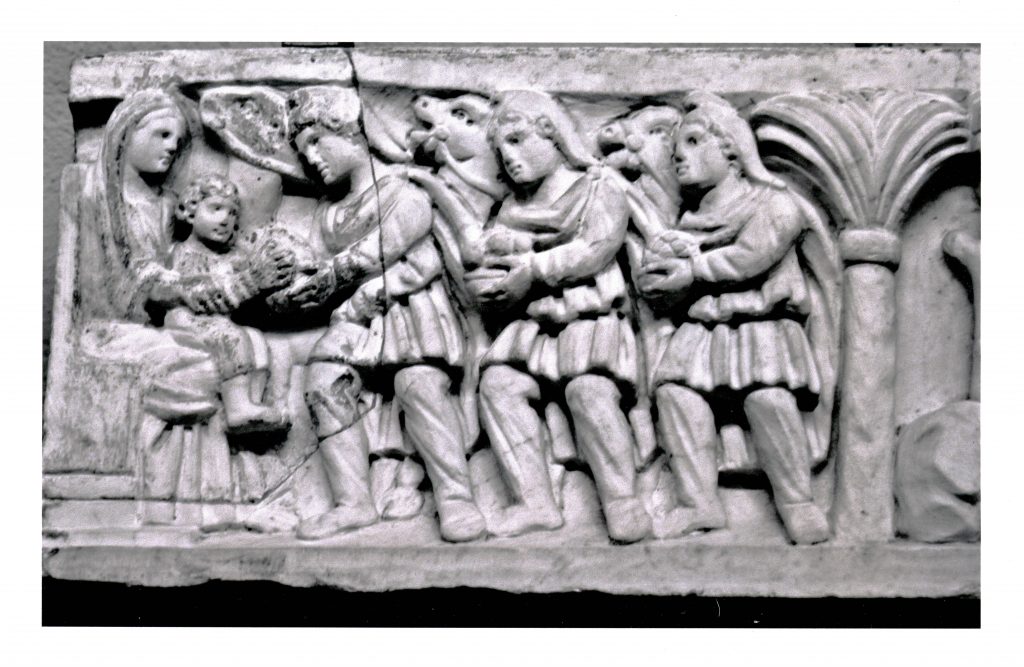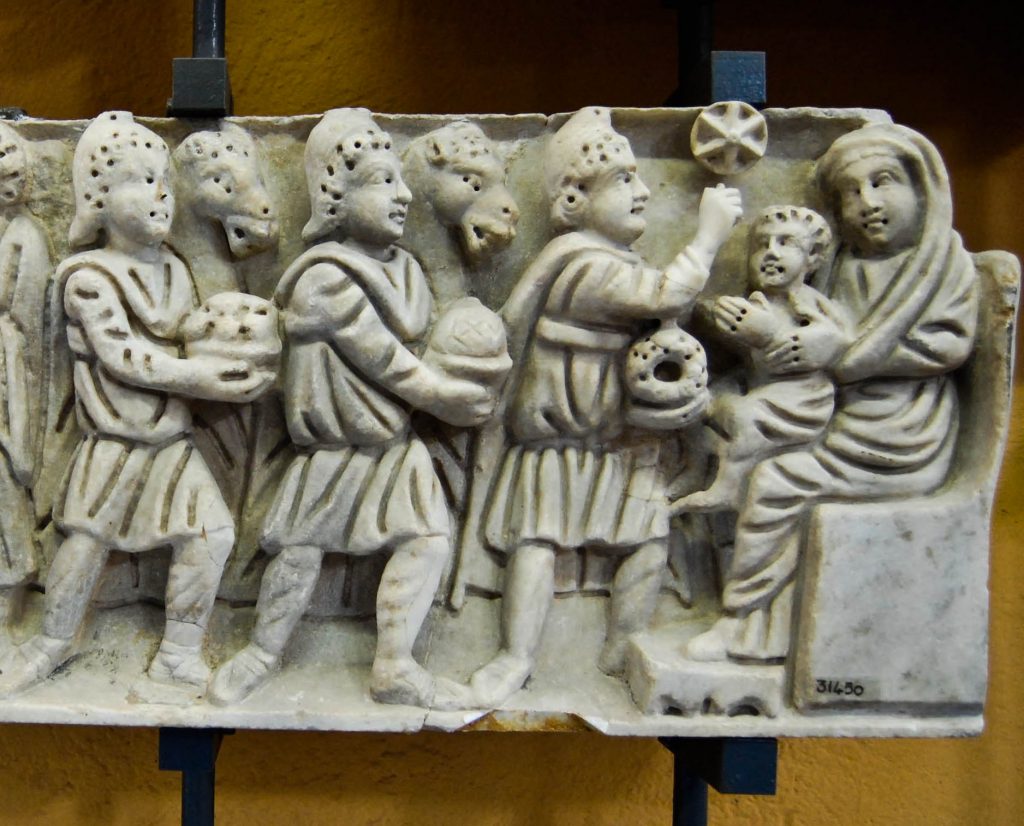22 Dec O Rex Gentium
The Adoration of the Magi: Images from Two Sarcophagi, Rome
 Above is section of a early Christian sarcophagus originally located in the catacombs of Rome and now in the Pio Christiano section of the Vatican Museums. It depicts the Magi bearing gifts for the Christ-child. They wear what the Romans imagined Persian dress to be like: pointy hats, skirts over pants. Mary, a stately and beautiful woman, holds her son, who emphatically receives the gift of first Magi. Three camels are in the background and each seems to register joy. The camel nearest to Christ, whose face is damaged, can barely be contained within the space provided for him, so great is his rejoicing. This sarcophagus is clearly the work of a playful and sensitive mind (Franciscan avant le temps), who wishes to convey to us the joy that the divine birth brings into world: even the animals can be seen to be rejoicing.
Above is section of a early Christian sarcophagus originally located in the catacombs of Rome and now in the Pio Christiano section of the Vatican Museums. It depicts the Magi bearing gifts for the Christ-child. They wear what the Romans imagined Persian dress to be like: pointy hats, skirts over pants. Mary, a stately and beautiful woman, holds her son, who emphatically receives the gift of first Magi. Three camels are in the background and each seems to register joy. The camel nearest to Christ, whose face is damaged, can barely be contained within the space provided for him, so great is his rejoicing. This sarcophagus is clearly the work of a playful and sensitive mind (Franciscan avant le temps), who wishes to convey to us the joy that the divine birth brings into world: even the animals can be seen to be rejoicing.

Above is another depiction of the Magi, again from an early Christian sarcophagus. The first Magi points to the star he has followed, now come to rest over the divine child it signifies. They have come to offer gifts and to adore the child. In this depiction both Mary and Christ almost turn to us—we too are being summoned to adore Christ and to honour his blessed Mother. This work of art trembles with a future possibility: soon in the history of art Mary’s chair (destined to become a glorious throne) will be turned to face us and the Mother and child isolated for our veneration alone. In this sarcophagus we are witnessing the birth pangs of the icon.
O Rex Gentium, et desideratus earum,
lapisque angularis, qui facis utraque unum:
veni, et salva hominem,
quem de limo formasti.
O King of the nations, and their desire,
the cornerstone making both one:
Come and save the human race,
which you fashioned from clay.
By Fr Thomas Trottier, Cong. Orat.

